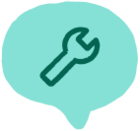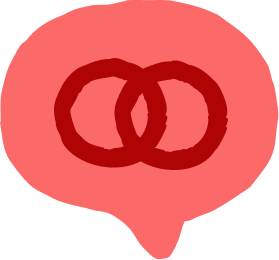Let's talk about creating a quiz funnel.
My goal is simple. I want to help you grow your business this year. With a quiz. That's my goal.
My goal is to do that for two reasons. 1 - I want to get you a ton of success. 2 - If I help you get a ton of success, you shout from the rooftop how great an experience that you had. With Typeform.
A single lead generating quiz or assessment is an effective strategy. Its being used by the brands with the biggest lists on the planet. To build their list and extract profit.
To be successful you need to follow a blueprint. A process.
The core process is this: attract, diagnose, prescribe.
You follow a specific set of steps. You begin with welcome step. It’s designed to attract people to your quiz. We call this the ‘hook’.
Next you ask a set of questions to diagnose a person’s situation.
Then you have an outcome for that person. Based on the results of their quiz. Now you want to prescribe the next step for them to take.
This is the order in which people go through your quiz. Attract, diagnose, prescribe. Welcome, questions, outcome. Right? Those are the steps.
But you build the quiz in a different order. You don't begin at the beginning. You begin with the end in mind. You start with the offer.
The reason for that is the number one goal of the quiz is to lead your ideal customer to your offer. Start with the end in mind.
You can build a quiz that has a powerful hook but doesn't move people into your paid product. The aim is to create a list of buyers. A list of people who buy your product or service and become customers.
Start with the end in mind. Begin with the offer. Then move to the hook. You end with the bridge connecting the two of them.
Build a quiz that has the greatest chance of success. Use the promise of self discovery.
It does not matter what you do in your market. Your market cares more about themselves - not you. Offer the opportunity to learn more about themselves. It's a compelling promise. It works if you help business owners get access funding. Or golfers to drive further or help guitarists get better at guitar.
You use this universal hook - the promise of self discovery. The hook has two parts. The first part is the quiz topic. It’s going to be unique to your quiz.
Quiz topics are infinite. There are an infinite number of potential quiz topics under the sun.
The second part of your hook is the quiz framework. There are only three quiz frameworks to choose from to build your quiz.
Your topic could be about anything. Golf. Guitar. Business funding. When it comes to your quiz framework there are only three of them.
The first type of quiz framework is a “type” quiz. In a type quiz you put people into different buckets based on their “type”. Myers-Briggs is a type-based quiz. These things work. If you've taken more than one of these, then you understand the power in how much they draw you to these concepts.
The second framework addresses the fear of loss. Fear of loss is seen to be more powerful than the promise of gain. We fear losing something more than we are excited about getting something new.
The second framework is a “killer” quiz.
A killer quiz is where you ask questions to identify the biggest mistake, or killer, that someone is making. In their life or their business. You help them identify the mistake and what to do instead.
For example: what’s the single biggest mistakes someone might be making in their golf swing. You ask these questions to attract, diagnose, prescribe and then we sell a product.
The third quiz framework is a score-based quiz. A score-based quiz is incredibly powerful. It can help people measure where they are in their life relative to where they want to be. Or relative to their peers.
You need to avoid asking the wrong questions. No matter which framework you use.
Your questions must create demand for the thing that you want to sell. The questions should make the user FEEL the need for the thing.
If you want to sell something immediately after people take your quiz, you need the right type of offer.
The right type of offer has two parts. A ‘band-aid’ and a cure’.
People want to solve a problem. They think they need a specific solution to solve that problem. Most of the time they want to address a symptom. With a band-aid. What they REALLY need is a cure. A cure that won’t allow the problem to happen again.
At the end of the quiz you give people the thing they think they want right now. The ‘band-aid’. The ‘cure’ is your pivot to the offer. The thing that you know that they need.
Band-aid - “Here’s the free ebook of 20 heart-healthy recipes for Thanksgiving dinner. To get your copy click the link below”
If you’ve done the job of creating the emotional demand they will click. The user will enter their email address on the opt-in page and download the ebook. They are in your mailing list now.
On the ‘Thank you’ page you offer them the ‘cure’. The thing that will fix the root cause of their problem. Not just a band-aid on a symptom.
Cure – “Sign up here for the 30-day Healthier Heart Wellness Program”
The quiz results deliver the band-aid for free. The offer delivers the cure for money.
If you’ve done the job of creating the emotional demand the user will opt into the cure. It’s ok if they don’t. They are on your mailing list. They have the band-aid. Now to use an email nurture campaign to convert them into customers.
What to look for in a quiz tool? You need a tool that creates conversations. You need a tool with branching logic. Are you a man or a woman? Show different questions based on the response. You need to be able to customize the outcome pages. You need to be able to integrate with your CRM and autoresponder platforms. Most of all you need your quiz tool that allows you to follow the blueprint. To follow the process.
That sounds an awful lot like Typeform!
Was this useful? If so, Like this post. Wanna know more? Leave a comment below.
des




